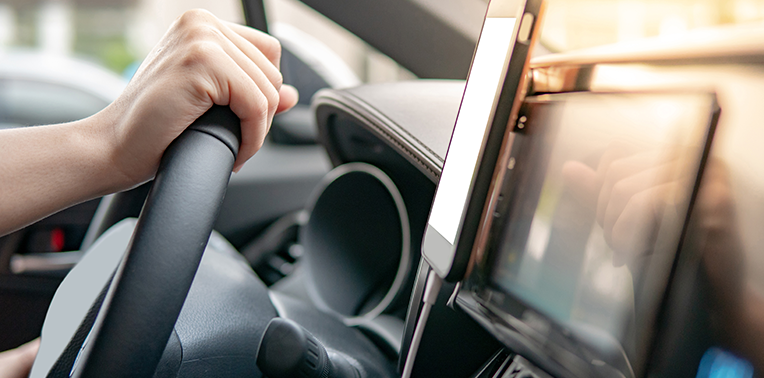Over the last few years, the automotive industry has had its share of ups and downs. Between high interest rates, continued supply chain issues, changes in customer demand and the ongoing economic turmoil, buyers are looking for stability. One place they find it is in safety ratings. Vehicle safety in the last decade has remained a top priority amongst buyers and vehicle developers. This focus has created features such as automatic breaking and forward collision alert, reducing the risk of a serious crash by nearly 50%, according to Kelly Blue Book. So, what are the safest vehicles of 2023? What does safety look like in vehicles today? And which vehicles have been rated the safest?
What to Know
First, who is deciding vehicle safety? The Insurance Institute for Highway Safety (IIHS) is a non-profit organization founded by insurance companies in 1959 to support academic and research organizations involved in highway safety. They combine three research buckets including human factors, vehicle and physical environment, which allows for precise and accurate data to inform companies to build safer vehicles.
Safest Vehicles by Category
Following this research, they curate an annual list of the safest vehicles, by size, brand and more. Their categories are broken down by, small cars, midsize cars, midsize luxury cars, large cars, large luxury cars, small SUVs, midsize SUVs, midsize luxury SUVs, large SUVs, minivans and large pickups. A few of the standout brands, across all categories, include:
- Toyota
- Subaru
- Genesis
- Honda
- Hyundai
How is the safety of these vehicles tested?
To be named to this list, there are a number of tests each vehicle is put through to establish their safety levels.
- Moderate overlap frontal test – For this test, a dummy is placed in the vehicle with a variety of sensors, which determine the likelihood of injury to a human, and the amount of physical intrusion in the event of a crash. Then the car is sent, at 40mph, to hit a two-foot-tall barrier. Then the damage is evaluated.
- Side crash test – For this test, two dummies are placed in the vehicle, one in the driver’s seat representing a small woman, and one placed behind the passenger seat representing a 12-year-old child. From here, the vehicle doesn’t move and a 3,300-pound SUV-replica crashes into the driver’s side at 31 miles per hour. This replicates a “t-bone” accident.
- Roof strength test – For roof strength, a metal plate is pushed against one side of the vehicle’s roof at a slow and constant speed. This force is calculated relative to the vehicle weight and reveals the strength-to-weight ratio. To score a “good” rating, a vehicle must be able to withstand a force that is four times greater than the vehicle’s weight before the roof is crushed five inches.
- Head restraints and seat test – Vehicle headrests are measured based on height and weight of an average sized male. Head restraints that receive a ‘good’ rating then must go through a rear-end crash simulation. For an overall ‘good’ rating, the head restraint must score a ‘good’ in both of these tests.
How did the IIHS come up with their safety tests?
These tests were developed not only from the IIHS’s own research, but also with data shared from hospitals that have improved and evolved their processes. For example, a study conducted by the Medical College of Wisconsin found that the most impacted locations following a small-overlap crash (when only 25% of the vehicle collides with the barrier) are the head, chest, hip, pelvis and spine. And nearly half of these crashes are single vehicle. Because of this research IIHS determined that side-impact air bags were crucial to mitigate these injuries, so in 2012 they updated their testing so that if these airbags do not deploy correctly, the vehicles score automatically drops to ‘poor.’
How does the safety rating system work?
From the tests mentioned above, vehicles receive a rating on a scale of good, acceptable, marginal or poor. Only those that receive a ‘good’ or ‘acceptable’ rating are listed in the annual ‘Safest Vehicles” list. While other safety features such as lane departure and follow distance are notes, the main focus here is testing the structural integrity of the vehicles. That is what especially matters when in a major collision.
It’s incredible to see how safety has evolved over the last 20 years, with only 10 vehicles receiving a ‘good’ rating since they started this award back in 2005 and this year, 61 vehicles received a ‘good’ rating and were named to their ‘Top Safety Pick+” list. From the Accura Integra to the Honda Accord, the Subaru Solterra to the Toyota Tundra, thee were a lot of safest vehicles of 2023. You can find the complete list on the IIHS website.
Heading to the Dealership?
When heading to the dealership, it’s crucial to put in the time and research into which vehicles perform best under crash tests and take the necessary steps to determine which is best for your needs. If you know most of your drive time will be spent on the highway, opt for a safer mid-size vehicle, while if you know the car will mostly be driven within a slow neighborhood, you may be able to opt for a smaller vehicle with a lower score.
When you’re ready to make your purchase, make sure you are equipped with all the information you need. And while vehicle cost is always a critical factor, ensure your safety is the top priority. Looking to learn more before making the big purchase? Check out our blog, What to Know when Buying a Car.







